- 1. Introduction to Neuroethics
- 2. Introduction to Neuropharmacology
- 3. Neuropharmaceuticals on the market
- 4. Ethical implications
- 5. Neuropharmacology in popular culture and in the popular imagination
- 6. Case Studies
- 7. Conclusion
- 8. References
2. Introduction to Neuropharmacology
Neuropharmacology is the study of drugs that interact with neurons in the brain to affect mood, sensation, behavior, and thinking. Some (but not all) of these alterations result from drug induced changes in the actions of the brain's chemical transmitters (brain neurochemistry). There is great interest in molecular neuroscience in both basic and clinical research, and new findings about topics such as neuropeptides, neurohormones, and neuromodulators, to name a few, are disseminated at an ever-increasing pace.
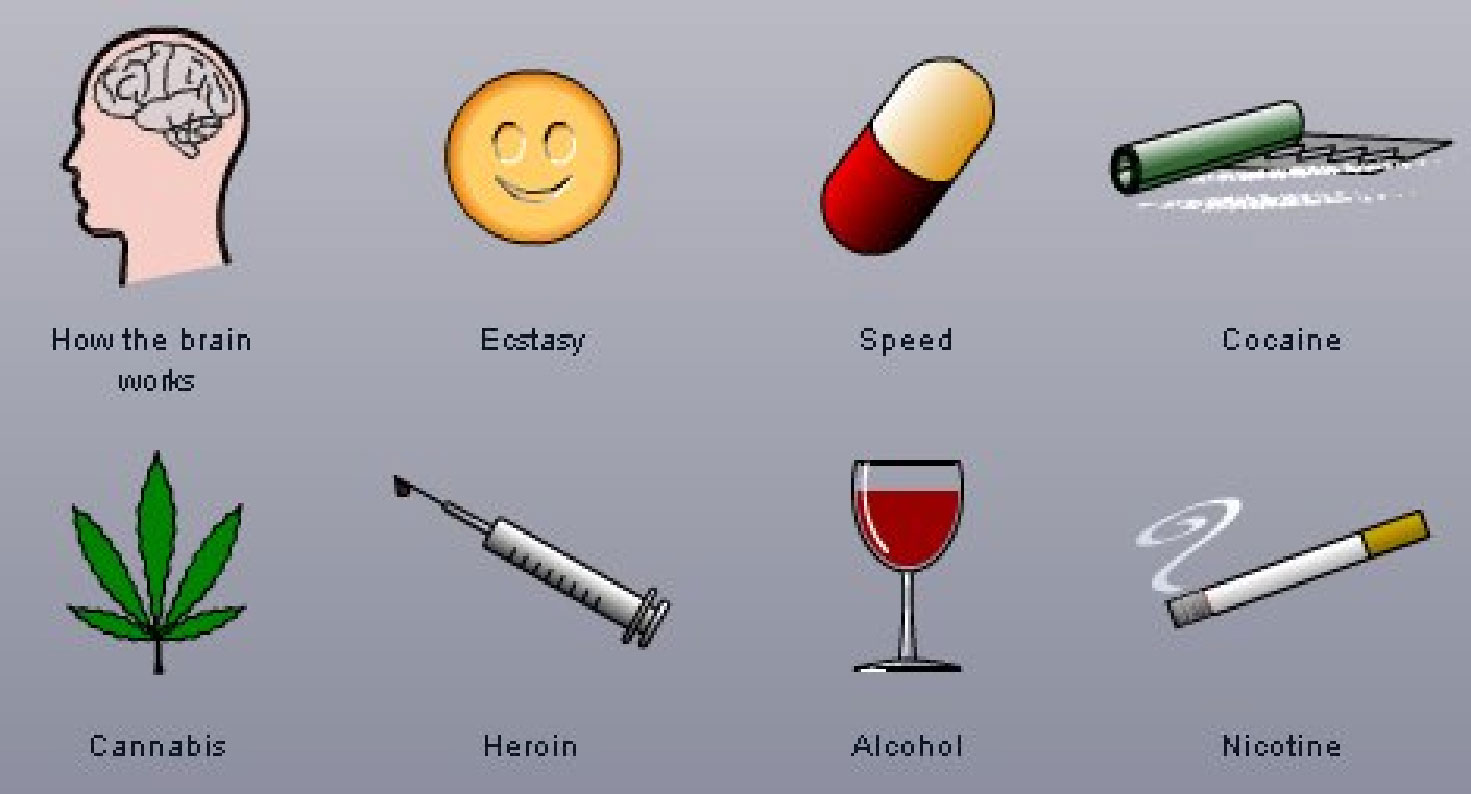
Source: Ursi's blog
While this module presents information on some newer drugs used in neurology, it will focus on the use of neuropharmaceuticals to modify brain processes with the aim of enhancing memory, mood, and attention in people who are not otherwise impaired by illness or disorder.2 Enhancement is not, of course, confined to neuroscience, but there is a sense that something is distinct about enhancing mental, cognitive, or behavioral functions and intervening directly in the brain. This sense arises from the cultural understanding of the brain as central to the self, identity, or personhood.3 As we continue to unravel the inner-workings of the mind, the act of manipulating the subjective experience with the use of mind-altering substances, both legal and not, has intrigued many. It is difficult to argue against neuroenhancement because of our lengthy history with substances of abuse, many of which were "discovered" as therapeutics. Many agree that the field of neuroenhancement became a part of mainstream culture with the publishing of Peter Kramer's book Listening to Prozac in 1993. The book touted Prozac's success in alleviating serious clinical depression, but also discussed the possibilities of lifting people's moods who were not clinically depressed. However, it has since become clear that selective serotonin reuptake inhibitors (SSRIs) such as Prozac are not the"happy pills" they once were heralded to be, and will not benefit those who do not suffer from significant mood disorders.
As many neurologists and neuroethicists deliberate the pros and cons of enhancement, the literature is growing, as are the questions they raise:
- Are enhanced brains better?
- Are there clear distinctions between therapy and enhancement, sick and well?
- If we can improve cognitive systems in disease, can we also do so in health?
- What is the role of the physician in disease treatment vs. healthy enhancement?
- Will neurologists become the gatekeepers in the patient's pursuit of happiness?
- If you need a drug to be your "self," do you really have a self at all?
- Is it not our error-prone, forgetful, emotional, mortal natures that, in fact, make us human? If we alter that, have we undermined our essence as beings?
In this module, we present a brief review of some of the newest psychoactive medications that are available. While acknowledging the undeniable value of these findings for both the ill and the healthy, it is imperative to consider the significant number of ethical implications produced by these discoveries.
2.1. What's New for Treatment and Enhancement
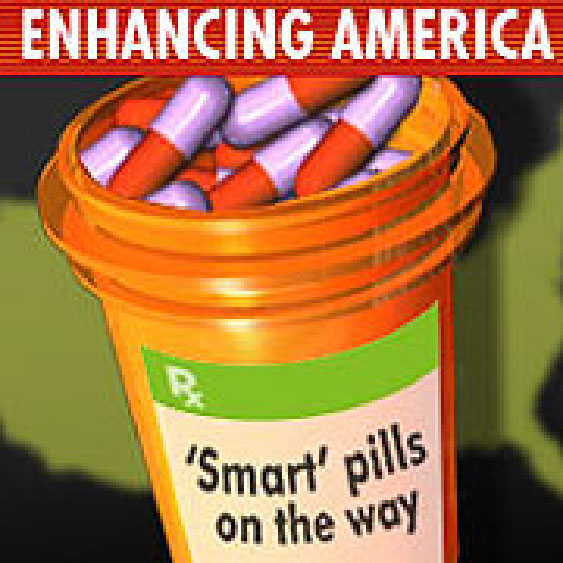
Source: USA Today
Neuropharmacology addresses both the treatment of those who are sick (therapy) and those who are well (enhancement). As such, drug therapy and use can be viewed along a spectrum, from drugs that may help a diseased individual, to the latest "smart drugs." Also known as nootropics, derived from the Greek words noos or "mind" and tropein meaning "to bend/turn," these "smart drugs" are intended to enhance functioning in the clinically normal individual. This approach to neuroenhancement has recently blossomed within the discipline of neuropharmacology.4 "Smart drugs" function by modulating catecholamine and cholinergic systems, and are emerging and being adapted from medications developed to treat psychiatric disorders and neurological impairments, including depression, schizophrenia, Alzheimer's disease, multiple sclerosis, stroke, and spinal cord injury.5 Many believe that if these medications can help people with impaired cognitive skills, they will have similar effects on someone of "normal" functioning, elevating the mental status to super-human levels.
3. Neuropharmaceuticals on the market
As the molecular biology of mood evolves, designer drugs will be tailored to influence behavior, cognition, and the formation of memories. Currently, the focus is on three broad areas:
- Enhancing cognition and mood
- Enhancing memory storage and retrieval
- Blocking or impeding memory formation.
The following sections will detail the types of drugs in each area, their medicinal and therapeutic uses, as well as the potential and actual ways they can be and are abused.
3.1. Enhancing normal cognition and moods
The drugs presented below illustrate a variety of classes of drugs that are used to alter mood, personality, and cognition.
3.1.1. Amphetamines (Adderall, Dexedrine)
Amphetamines are stimulants that increase the amount of dopamine by:
- causing the release of dopamine from axon terminals
- blocking dopamine reuptake
- inhibiting the storage of dopamine in vesicles
- inhibiting the destruction of dopamine by enzymes. Various isomers of amphetamines have different effects, and trigger the release of distinct combinations of norepinephrine and serotonin. Amphetamine causes release of a number of biogenic amines in the brain, not only dopamine. Release of norepinephrine is very important, as is serotonin.6
The best known medicinal use of amphetamines is to treat attention-deficit hyperactivity disorder (ADHD). Drugs like Adderall and Dexedrine can improve impulse control, increase concentration, and decrease sensory overstimulation. New evidence demonstrates that amphetamines may improve motor function, language learning, and speech therapy among stroke patients.7 The number of patients studied for these effects, however, is too few as of yet to draw any significant conclusions, and the neurological mechanism for these results remains unclear.
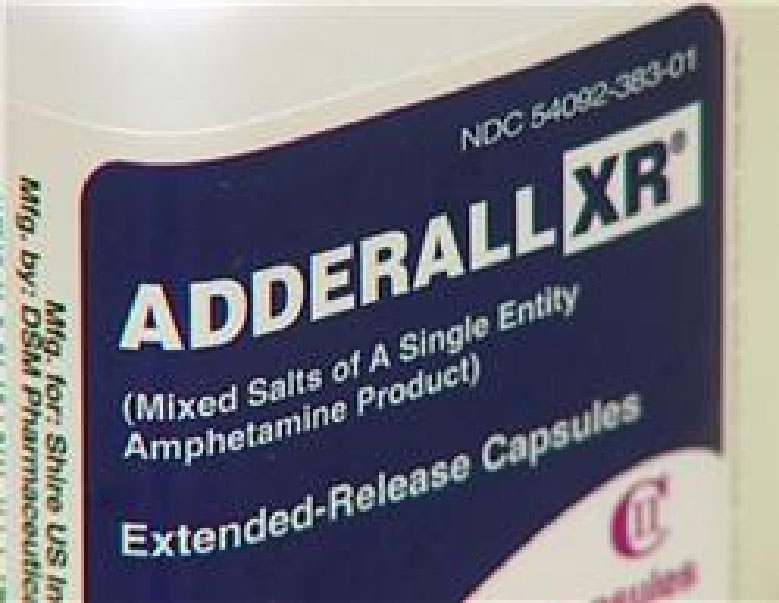
Source: KRCG Online
Amphetamines are also used illegally as recreational club drugs. They have a number of short and long-term effects including increased stamina, alertness, sexual drive, and euphoria. They also cause hallucinations and involuntary movements like teeth grinding and an irregular heart rate. Amphetamines are addictive and symptoms of withdrawal include severe depression and fatigue.
3.1.2. Modafinil (Provigil)
Modafinil (Provigil) is a mood-brightening and memory-enhancing psychostimulant that produces long-lasting wakefulness and mental alertness. The primary sites of modafinil's CNS activity appear to be in the subregions of the hippocampus, the centrolateral nucleus of the thalamus, and the central nucleus of the amygdala. Limited animal studies demonstrate that modafinil may increase excitatory glutaminergic transmission in the thalamus and hippocampus. In contrast to the amphetamines and other CNS stimulants, the effects of modafinil do not appear to be mediated by dopamine or sympathomimetic systems. In vitro and in vivo studies demonstrate that modafinil does not bind to most of the neurochemical receptors involved in sleep-wake cycles, including norepinephrine, serotonin, dopamine, GABA, adenosine, histamine, monoamine oxidase B, and benzodiazepines. Modafinil also does not alter hormones associated with sleep regulation (i.e., melatonin, cortisol, or growth hormone). Modafinil-induced wakefulness does not influence nocturnal sleep patterns or the incidence of cataplexy in narcoleptic patients. In the periphery, the actions of modafinil appear to be minimal at normally prescribed doses. Modafinil doses of greater than 800 mg per day have produced symptoms of increased blood pressure and heart rate.8 Therapeutically, Modafinil is generally prescribed to treat sleep disorders, but also has a number of medical off-label uses. It is used to treat fatigue unrelated to sleep deprivation, such as in depression and Parkinson's disease. Modafinil can also be prescribed as a treatment for Attention Deficit Hyperactivity Disorder (ADHD).
While the majority of SSRIs have been shown not to be effective in people without medical need for the drugs, modafinil has been demonstrated to have cognitive enhancing effects for healthy, non-sleep-deprived users.9 Modafinil may help recovering cocaine/amphetamine addicts to fight their addiction, and the militaries of several countries have started research into using modafinil to keep jet fighters and helicopter pilots awake during long missions. Similarly, by allowing users to sustain higher cognitive levels on much less sleep, modafinil has become particularly attractive to college students.10
3.1.3. Methylphenidate (Ritalin)
Methylphenidate (Ritalin) is a mild central nervous system stimulant commonly used to treat ADHD in children, daytime drowsiness, narcolepsy, and chronic fatigue syndrome. The pharmacological mechanism is not fully understood, but it is thought to act as both a dopamine and norepinephrine reuptake inhibitor, thus resulting in prolonging the dopamine and adrenergic receptor effects.

Source: MSNBC
The most well-known form of methylphenidate is Ritalin. Individuals with ADHD can use this drug to improve attention and concentration. According to most estimates, more than 75 percent of methylphenidate prescriptions are written for children, with boys being about four times as likely to take methylphenidate as girls.
Doctors used to prescribe Ritalin to treat depression, but then it was discovered that for many users, going off of Ritalin can trigger a greater state of depression during the period of withdrawal. Often, parents will report that their children become apathetic to stimuli, and have trouble focusing when they go off the drug. Still, modafinil seems to be effective as a treatment for depression in elderly patients.11
Ritalin is quickly becoming one of the most abused drugs on college campuses, as it is easily obtained on the Internet or on the black market and improves a user's alertness and concentration. There are risks to its recreational use, as it can increase the heart rate and blood pressure to dangerous levels. On college campuses, where students are likely to be using other drugs and alcohol as well, the addition of Ritalin to the mix, or using Ritalin to stay awake and party longer, could produce negative effects.
3.1.4. Atomoxetine (Strattera)
Atomoxetine (Strattera) is a non-stimulant drug originally designed to treat depression, but when it failed to show an effect, it was tested and approved for the treatment of ADHD. It is a norepinephrine reuptake inhibitor, and acts by elevating the extracellular level of norepinephrine in the central nervous system. It has less potential for addiction and abuse than stimulants, and is approved for use in children, teenagers, and adults. Side effects include drowsiness, heartburn and other digestive problems. Because a study demonstrated an increased suicidal ideation among children and adolescents taking this drug, the FDA gave it a black box warning.
Off-label, atomoxetine is used as a short-term treatment for binge eating disorders.12 Additionally, a preliminary trial has demonstrated that atomoxetine may help obese individuals with a minor amount of weight loss.13 Finally, while atomoxetine failed to receive an FDA indication as a treatment for depression, many patients have found it effective when used in conjunction with other antidepressants, although the mechanism is still not understood.
3.1.5. Donepezil (Aricept)
Donepezil (Aricept) is a reversible acetyl cholinesterase inhibitor. It increases acetylcholine, a neurotransmitter that allows neurons to communicate with each other by preventing the cholinesterase enzyme from breaking it down. Originally developed for the treatment of dementia, donepezil has also been found to boost the brain function of healthy people. It is an effective drug, with a bioavailability of 100%, and it easily crosses the blood-brain barrier.
Donepezil's main therapeutic use is in the treatment of Alzheimer's disease, either alone or with other drugs, but there is no definite proof that it effectively changes the course of the disease. Donepezil has been studied in patients with a number of other cognitive disorders, including Lewy body dementia, schizophrenia, Attention Deficit Disorder (ADD), and Down syndrome, but the results have varied widely and are inconclusive. Side effects are usually less severe than similar drugs in its class, but may include nausea, diarrhea, and vivid dreams. Given that donepezil is intended to stimulate neural connections for people suffering from dementia, it may also help enhance memory functioning in neurologically healthy individuals.
3.1.6. Fluoxetine hydrochloride (Prozac) and other SSRI's
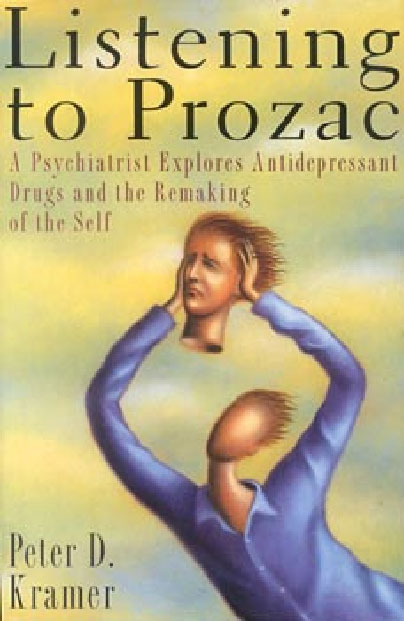
Source: The Vaults of Erowid
Fluoxetine hydrochloride (Prozac) and other SSRI's (selective serotonin reuptake inhibitors) are a class of antidepressants used to relieve symptoms for many conditions: social phobia, obsessive-compulsive disorder, post-traumatic stress disorder, generalized anxiety disorder, and major depression. As a class, they work by increasing the extracellular level of serotonin available to bind to the postsynaptic receptor.
While SSRIs are effective in clinical situations, they are not simply "happy pills" that shift depressed people to normalcy, and normal people even further to bliss. Rather, SSRIs attenuate the "hassle" factor in life, meaning that they are mostly effective in people with depression, anxiety, and personality disorders. People who take SSRIs in the absence of definite mental illness, and the physicians who observe them, commonly report that negative feelings such as sadness and anger do not disappear but diminish, as does the inclination to brood over them.14
There are a number of adverse physical, sexual, and cardiovascular side effects that come with SSRI use. There is a risk of serotonin syndrome, a potentially life-threatening adverse drug reaction caused by excess serotonin activity at the CNS and peripheral serotonin receptors. Also, while SSRIs are not conventionally addictive, suddenly discontinuing their use can lead to physical and psychological withdrawal symptoms that can last from weeks to months.15 Over the years there have been many case studies and reports of SSRIs causing suicidal ideation and aggressive behavior in some patients, but no conclusive link has been proven. There is a required black box warning for suicide risk in children, but not adults. In fact, Prozac is the only SSRI licensed for children in the U.S. and U.K.16
3.1.7. Herbal supplements (St. JohnÕs Wort)

Source: Answers.com
Herbal supplements like St. John's Wort are used to treat low and mild depression. Clinical trials have established its efficacy, but data remain inconclusive for those with more severe depression. The active constituents in St John's Wort are hyperforin and hypericin, and they are thought to work by a pharmacological mechanism similar to SSRIs. St. John's Wort is considered safe, with the most common side effects reported to be gastrointestinal symptoms, dizziness, and confusion. Despite this safety rating, it should be noted that the FDA issued a Public Health Advisory in 1999 to warn users of the herb's interactions with commonly prescribed medications, including birth control pills, cyclosporine (a transplant anti-rejection drug), indinavir (an HIV treatment), and warfarin (an anticoagulant).17
3.2. Manipulating memory formation and cognition
The drugs presented below are sometimes referred to as "smart drugs." These formulations target the ability to create and retain memories. This kind of brain function impacts many aspects of everyday life, from reactions to stressful situations, to the quality of working memory, which subsequently enhances the performance of cognitive tasks and executive functions such as reasoning and decision making.
3.2.1. Ampakines (Farampator)
Ampakines (a type of stimulant) are a class of drugs that enhance attention span and alertness. They work by binding in the brain to AMPA-type glutamate receptors. This boosts the activity of the neurotransmitter glutamate, which makes it easier to acquire and consolidate new memories.18 There are not many known side effects for ampakines (they do not cause sleeplessness like other stimulants), but one ampakine, Farampator, causes nausea and impaired episodic memory.
Ampakines have been studied as potential treatment for a range of conditions involving mental disability such as seen in Alzheimer's disease and schizophrenia, as well as in ADHD. In behavioral tests, ampakines facilitate learning and improve short-term memory.19 In a 2006 study, researchers found that the ampakines' effects lingered after they left the body, continuing to enhance learning and memory.20 The Pentagon is testing one ampakine as an antidote for sleep deprivation.21 These drugs may be the first of a new generation of cognitive enhancers to be available to the public, as Cortex Pharmaceuticals, Inc., is beginning to develop ampakines to be marketed as cognitive enhancers.22
3.2.2. Propranolol (Inderal)
Propranolol (Inderal), a non-selective beta-adrenergic receptor blocking agent used in cardiology, blocks the actions of epinephrine and norepinephrine on the beta-adrenergic receptors, which mediate the "fight or flight" response. When a threat stimulates adrenaline production, this embeds a non-conscious emotional memory of fearful/threatening events for future reference and recall.23 Propranolol use, then, may prevent the embedding of pathological unconscious emotional memories. Adverse effects associated with propranolol include nausea, heart problems, depression, and hallucinations.24,25
Currently, propranolol is used to manage conditions including hypertension, angina, and tachyarrhythmia, but it is also being used experimentally to treat Post-Traumatic Stress Disorder (PTSD). Propranolol, already being used by people suffering from stage fright, could be used prophylacticly by those entering into potentially traumatic situations such as war, natural disasters, police work, etc.,26 to lower the incidence of PTSD. In the event of propranolol's widespread use, there is the danger that the drug could be abused in the interest of nefarious activities. For instance, people intending to commit horrific crimes (murder, torture, assassination missions) may take the drug to relieve themselves of the pain of remembering. Similarly, these criminals could also give the drug to their victims making them forget the event so they cannot testify accurately.
3.2.3. Herbal supplements (Ginko Biloba)

Source: Answers.com
Herbal Supplements like Gingko Biloba are thought to have neuropharmaceutical properties. Studies on the ability of Ginkgo Biloba to enhance memory (through increasing blood flow in the brain) have been inconclusive. In 2005, a study presented at the U.S.-based Alzheimer's Association conference showed that a supplement called GETO, which contains ginseng, epimedium herb, thinleaf milkwort root, and two other herbs, could reduce memory damage due to dementia.27
3.3. Future prospects
There are a number of neuropharmaceuticals that are still in development. These are the harbingers of a new generation of drugs that are not adapted for a new indication, but rather are produced with the express purpose of enhancing or manipulating memory, cognition, mood, or personality. Without specific therapeutic targets, it will be interesting to see how the FDA chooses to approach these new compounds, if they will be approved, and under what conditions. A major issue to consider is if these drugs will be available over the counter or by prescription only.
3.3.1. Oxytocin Nasal Spray.
In July 2007, University of Zurich researchers developed a nasal spray containing oxytocin, a mammalian hormone that also acts as a neurotransmitter.28 The spray is intended to relieve people of shyness and facilitate social interactions.29 As a hormone, oxytocin works on labor and breastfeeding, but as a neurotransmitter, it affects social recognition, trust, and bonding. Oxytocin is thought to be relatively safe when used at recommended doses, but potential side effects include increased heart rate, seizures, and water retention. There are a number of oxytocin nasal sprays available for breast-feeding mothers, but they are targeted to increase the levels of the hormone form of the compound, rather than the neurotransmitter form like this new drug. A pilot study has been conducted with very dramatic results indicating that it is effective, and the researchers are planning larger-scale trials. They estimate that the spray could be on the market within the next five years.
3.3.2. CREB modulators
CREB modulators are designed to enhance memory formation, without the treatment of any particular disease in mind. They are thought to work by inhibiting PDE4, an enzyme which breaks down cAMP, an important neuronal and intracellular signaling molecule. By increasing the levels of cAMP, these drugs upregulate the activity of a transcription factor called the cAMP response element-binding (CREB). CREBs activate a pattern of neural gene expression that results in synaptic growth and strengthening the connections among active neurons. This may augment the acquisition of long-term memory and strengthen memory consolidation.
Once activated, CREB modulators appear to allow brain cells to make the connections vital for memory formation. Tim Tully, a professor of genetics at Cold Spring Harbor Laboratory in New York who developed the drug, said: "If it proves safe and effective, it could ultimately be used by people who want to learn a language or a musical instrument or even in schools."30
Defense Department scientists are pursuing the use of this drug as an enhancement that could offer an advantage to U.S. combat forces. The Pentagon spends $20 million per year exploring ways to "expand available memory" and to build "sleep-resistant circuitry" in the brain.31 As they develop and expand this research, we need to consider if we should be pushing soldiers to the limits of physical exertion through the use of drugs.
A number of pharmaceutical companies are developing marketable CREB modulators. Memory Pharmaceutical's recently completed Phase I clinical trials proved their drug, MEM 1414, generally well-tolerated.32 As of June 2007, Helicon Therapeutics reported promising signs resulting from their Phase IIa clinical trial.33 It should be noted that these drugs are still in the early phases of development, and until additional trials are completed, we will not fully understand the effectiveness and side effects of these drugs.
4. Ethical Implications

Source: Corante
Many neuropharmacological agents can be used as therapy to treat diseases, or as enhancements to make the healthy user "better than well." Many agree that the benefits of these neuropharmaceuticals for those who are sick outweigh the potential for abuse and, therefore, development should continue. It is crucial, nonetheless, to consider the ethical and social consequences of potential widespread use and abuse of these neuropharmacological agents as neuroenhancements proliferate and reach increasingly diverse populations of users.
In the following sections, we focus on the use of nootropic agents as enhancements in healthy individuals, and the relevant ethical issues accompanying their wider use.
There are different ways our society, and the legal and medical systems, can attempt to resolve the ethical issues raised here. The future control of these drugs could range from an authoritarian blanket ban against all development and use, to a more lenient and tailored program of dispensation based on individual circumstances, to a complete free-for-all with over-the-counter access for anyone who can afford them. A well- considered resolution to these questions will look at components like safety, individual's roles and rights in society, distributive justice, and medicalization practices.
4.1. Safety
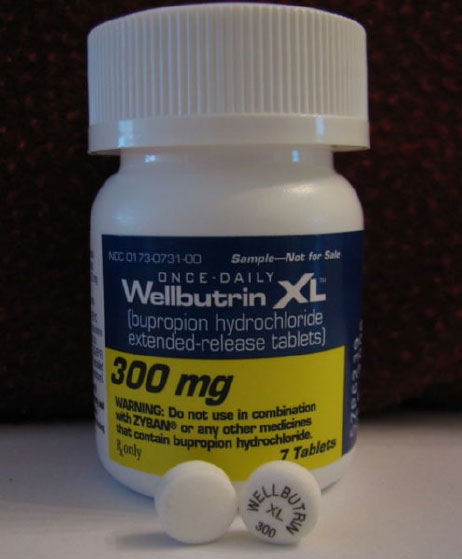
Source: Discount Drugstore Online
Should there be different standards for safety when a drug is given to people who use it for therapy, as opposed to enhancement? Many drugs with high risk-benefit ratios are given to gravely ill people, as is the case of chemotherapy for cancer patients and strong anti-depressants like lithium for the severely depressed. In these cases, the tolerance for risk is very high because the need and potential for benefit are very great. This is not necessarily true when clinically healthy people use drugs for enhancement. Because these users are healthy and functioning well in society, there should be a very high threshold for allowable risk to healthy users. The medical and pharmaceutical communities need to determine types of clinical studies necessary to demonstrate appropriate safety levels for drugs taken by healthy people as an enhancement. In evaluating the safety of these drugs for recreational use or enhancement,34 we also need to consider hidden costs and risks to using these drugs. We know, for example, they affect both storage and retrieval of memories, but it is unclear whether altering one affects the other.
In the 21st century American model of the doctor-patient relationship, the dominant concept is that of patient autonomy. Here the doctor provides the patient with accurate information about a panoply of options, then the patient is free to weigh and consider the information and decide for him or herself which option to choose. If we embrace this model for the regulation of enhancement drugs, this would argue for the relaxation of safety standards for a drug that provides a benefit to healthy individuals, allowing them to choose just how much risk they are willing to accept. In this case, we would need to find a way to ensure that people are receiving accurate information from reliable sources.
It is important to remember, however, that much of the pharmaceutical industry does not rely on individual patient autonomy. There are strict prescribing rules, including who may write a prescription, for what particular dose, and how many refills. This is true even when prescribing drugs that have a low potential for abuse and mild side-effects. With that in mind, it is unreasonable to believe that distribution of neuroenhancers would be left solely to the individual.
We critically need accurate and current clinical trial data about neuropharmaceuticals available today. Clinical trials frequently last six months or less, while individuals continue taking the pharmaceutical preparations for much longer periods. Therefore, the long-term effects of these drugs are mostly unknown. Scant data are available related to the effect of these drugs when prescribed to children, an important omission since we know that children, adolescents, and adults can have different and unanticipated reactions to a drug. We cannot necessarily expect that clinical data for one age range will apply to any of the others. Clinical trials and their monitoring need to become more in step with current understandings of individual metabolism and prescribing practices.
The need for longer, more comprehensive clinical trials can be illustrated through the example of modafinil, described above. Despite how attractive modafinil appears as a sleep inhibitor with few and moderate side effects, we know sleep is important for neuroplasticity. Thus, pharmacologically eliminating the need for sleep could impair the brain's ability to adapt to a changing environment or to recover from injury. Additionally, sleep is important in the consolidation of newly acquired memories. We can not help but question whether chronic use of this medication would result in synapse remodeling, alteration of neural circuitry, or permanent changes to the brain. Unfortunately, until we have comprehensive longitudinal studies of usage, the answers to these questions will likely remain unclear.35
4.2. Societal Coercion

Source: International Chiropractice Pediatric Association
Many drugs described in this module either are or have the potential for off-label use as performance enhancers. Methylphenidate (Ritalin) is an example of a drug widely used and abused by high school and college students in their attempt to study better and retain more information. Yet Ritalin remains a prescription drug with specific, other indications. So consider what would happen if a nootropic drug such as Ritalin were labeled as a study aid and its use became ubiquitous, easily available without a prescription. Would every student believe it was necessary to take this drug to remain competitive? If the majority of students used it, would it then offer users any competitive advantage? What would happen to students who chose not to take Ritalin in order to study for an exam? Would they be at a significant disadvantage?
The widespread use of neuropharmaceuticals will likely have a profound effect on what we think of as normal, or accepted, levels of performance, as well as our concepts of substandard performance levels, or of people in need of therapy. How will we evaluate or even value the accomplishments of someone who uses neuropharmaceuticals, as opposed to those who "just say no" to enhancement? Consider if we truly value people for their unique contributions and hard work, even if this effort results in limited success, or if we measure success solely by accomplishments. Would using a medicinal performance enhancer be construed as a way of cheating, of making an end-run around hard work and dedication, and of shifting society's focus from effort to accomplishment?
Alternatively, we could see nootropic use by individuals as a boon to the greater community. If individuals take these drugs to enhance their performance, and enhanced performance has significant benefits for others in the community (e.g., better doctors, airline pilots, assembly line workers), society as a whole clearly would benefit from the use of neuropharmaceuticals. Still, there remains much potential for abuse on the individual level. The promotion of these social benefits should not eclipse notions of free will and personal choice. We should not create a situation where individuals are compelled to take an enhancement drug because of the benefit it will have to others in society, regardless of the individual's personal response to the compound or personal beliefs and values regarding drug use and performance enhancement in general.
4.3. Character and Individuality
In his 1993 book Listening to Prozac, author Peter Kramer focuses on the overlooked ability of the drug to transform the user's self-conception. Prozac (fluoxetine Hcl ) can relieve anxiety, improve confidence and energy, and facilitate social and business skills. He contemplates, rightly, what this means for our ability to define and shape personality through pharmacology.36
Others have recognized additional implications of mood and personality-altering drugs like Prozac. Dr. Martha Farah from the University of Pennsylvania asks what would happen if a man falls in love with a person who takes Prozac, who then stops taking the drug and subsequently develops (or reverts to) a different personality.37 Is this still the same person with whom he fell in love? Or did he only love the person when on Prozac? Questions like these are extraordinarily difficult to answer because we have no cohesive understanding of what personality or the self consists of.38 If people can change their personalities and outlooks through therapy and hard work, is this significantly different from changing them through medication?
4.3.1. Does Memory define personality?

Source: Just a blip
Memory drugs that enhance or reduce memory capabilities hold great potential to radically change individual personalities and characters. Our memories are integral to how we define and describe ourselves. Given that, what does it mean if we have the power to change our memories? Erasing (or easing) a distressing or embarrassing memory of a mistake could free an individual from stress and anxiety. But in the future, the person might be more inclined to make the same mistake again.
Finally, memory-altering drugs may produce unintended consequences, especially when it comes to enhancing memory in healthy individuals. Before the wholesale adoption of memory enhancement compounds, we should consider how much memory is too much, and how do we manage the parameters of the drugs' effects.
4.4. Distributive Justice

Source: The White House
Neuroenhancements may exacerbate the existing socioeconomic gap.39 Yet there are some who argue that this aspect of neuroenhancement does not pose a unique challenge to equity, and should not be particularly controversial as there are countless consumer goods available which enhance or improve performance (e.g. caffeine in coffee and nicotine in cigarettes). Since not everyone will be able to afford enhancement drugs, should neuropharmaceutical enhancements be distributed differently? Others add that because we accept grave injustices, such as the fact that millions of people in the U.S. do not have access to even basic nutrition and health care, taking enhancing drugs should not stand out as exceptions. Still others argue that health and educational opportunities are crucial to the pursuit of life, liberty and happiness, and, hence, the bad luck of genetic and social distribution should not be exacerbated by the differential distribution of pharmacological aids. Is the answer to give enhancement drugs to everyone?
Interestingly enough, neuropharmaceuticals have different effects on different sectors of society. Studies have demonstrated that drugs like Adderall help those who need it most and provide little benefit to those already at a high level of functioning. In some cases, particularly with Bromocriptine, these drugs improve performance on various executive functions tasks for individuals with lower-than-average working memory capacity but lowered the performance of those with the highest working memory capacities.40 The implications of this last study are particularly important. Some "smart drugs" may serve to correct inequities, rather than exacerbate them. In that case, what is the appropriate action to take? Should they be distributed in order to improve the lives of those who were born with a low aptitude for academic and social achievement? In this case, lack of access to neuroenhancement would only continue to widen an already large gap.
4.5. Medicalization of the Human Condition

Source: WP Clipart
We run the risk that, in the face of being able to correct every personal and social defect with pharmaceuticals, the conception of what is a "normal" state of health and well- being may change drastically. As noted in the section on safety and clinical trials, neuropharmaceuticals may affect people in subtle and inexplicably inconsistent ways. Not everyone responds the same way to neuropharmaceuticals, and some may get no result at all. If a person takes an enhancing agent, but does not experience the desired effect, is that person somehow abnormal?
How should we accept or handle natural variation across the population? With personality traits that can fall along a wide spectrum, such as intelligence or social savvy, drawing the line between who is "sick" and who is "normal" is difficult enough. The task is complicated further if we can augment these traits through the use of drugs. A good example of this concern can be found in the rapidly-growing use of anti- depressants. Children and adolescents can receive prescriptions for anti-depressants if they present with a wide and inconsistent range of depression-related symptoms. Many worry that young people receive these drugs needlessly, especially in cases where human emotions like sadness and frustration fall within the normal range of appropriate reactions to stimuli but are misinterpreted as a form of disease. If we set the bar for "normal" happiness too high, we may end up creating a society where children and adolescents are routinely given powerful pharmaceuticals that have known risks because they are not as happy as others think they should be.
4.6. Some Final Considerations
It is clear is that neurological enhancements are here to stay. The potential market is too extensive and the desire too pervasive to be ignored by pharmaceutical companies. Our experience with other drugs has shown that even strictly prohibitive laws and policies make little difference in restricting their use, as people will undoubtedly gain access to such drugs by way of an unregulated free market or even a black market. The attraction of drugs that can boost mental performance, increase mental alertness, or relieve disturbing memories is difficult to deny. If we are to accept the increasing use of enhancement drugs, then as a society we should develop sensible policies and regulations to ensure the widest benefit with the least harm.
5. Neuropharmacology in popular culture and in the popular imagination
Popular culture often serves as commentary on contemporary issues in science and medicine. Though the portrayals of emergent health technologies in literature and film often jump to the wildest extremes, they also stimulate the popular imagination. In particular, depictions of mood and mind altering pharmaceuticals have long been a common subject. It is worthwhile to consider the power they have to shape, and, unfortunately, sometimes misinform, public attitudes.
5.1. Kids in the Hall: Brain Candy

In the 1996 movie, Kids in the Hall: Brain Candy, a failing pharmaceutical company creates the perfect anti-depressant drug called "Gleemonex." The drug locks users into continuously reliving their happiest memories. Things seem to be going well until it is discovered that the drug renders 5% of users comatose. A race ensues between scientists who want to tell the world the truth and the company's marketing department who wants to keep secret the negative elements so they may turn a greater profit. Given the attention that anti-depressant drugs (like Prozac) received in the news media at the time of this film's release, this was an appropriate satire on the state of the neuropharmaceutical industry. The film makes some interesting points about the distinction between clinical depression and run-of-the-mill "sadness," and the degree to which we are (perhaps) overusing drugs as a long-term solution to the former, and as a way to suppress the latter. Much of the content is politically incorrect and offensive, but it does not deter from the overall message about neuropharmaceuticals.
5.2. Prozac Nation
Elizabeth Wurtzel's autobiography, Prozac Nation, was published in 1994 as an account of her struggles with clinical atypical depression, a severe, episodic psychological disorder. In 2001, the book was turned into a movie starring Christina Ricci, but was not widely released in theaters in the U.S. Both the book and the movie chronicle Wurtzel's experience with mental illness, her own character failings, and how she managed to live through particularly difficult periods in college and while working as a writer. After multiple forays in treatment and suicide attempts, she was put on Prozac with relative success. She writes about what it was like to go on anti-depressants. While overall, it eased her disease, she discusses how intimidating it was to leave her familiar state behind and her concerns about the "fakeness" of altering moods, even in severe disorders like her own. While some readers of the book find the author self-indulgent, the story's real value lies in the fact that it is an honest, detailed, and accessible description of drug use in an often stigmatized and misunderstood illness.

Please click here to go to the interesting cases and challenging questions.
1 William Safire, Mapping the Field Conference, 2002. San Francisco, CA.

2 Hall W. Feeling 'better than well.' EMBO reports. 2004; 5(12): 1105-1109.

3 Wolpe PR. Treatment, Enhancement and the Ethics of Neurotherapeutics. Brain and
Cognition. 2002; 50: 387-395.

4 Rose S.P.R. 'Smart Drugs:' Do They Work? Are They Ethical? Will They Be Legal?
Nature Reviews Neuroscience. 2002; 3: 975-979.

5 Hall SS. The Quest for a Smart Pill. Scientific American. 2003; 289: 54-65. Available
from: http://www.sciam.com/article.cfm?articleID=0003D338-2B81-1F30-
9AD380A84189F2D7.

6 Brunton, L, Ed. Goodman and Gilman's The Pharmacological Basis of Therapeutics.
New York: McGraw-Hill. 2006.

7 Martinson L, Hardemark H, Eksborg S. Amphetamines for improving recovery after
stroke. Cochrane Database Syst Rev. 2007 Jan 24; 1.

8 The McGraw-Hill Companies. Access Medicine. 2007. Available from:
http://www.accessmedicine.com/drugs.aspx?index=M.

9 Medline Plus [Web site on the Internet]. Modafinil. [updated 2005 July 1; cited 2007
August 3]. Available from:
http://www.nlm.nih.gov/medlineplus/druginfo/medmaster/a602016.html.

10 Glannon W. Neuroethics. Bioethics. 2006; 20(1): 37-52.

11 Emptage RE, Semla TP. Depression in the medically ill elderly: a focus on
methylphenidate. Ann Pharmacother. 1996 Feb; 30(2):151-7. Available from:
http://www.ncbi.nlm.nih.gov.laneproxy.stanford.edu/sites/entrez.

12 McElroy, Susan. Atomoxetine in the Treatment of Binge-Eating Disorder: A Randomized
Placebo-Controlled Trial. Journal of Clinical Psychiatry. 2007; 68 (3): 390-398.

13 Gadde KM. Atomoxetine for weight reduction in obese women: a preliminary randomized
controlled trial. International Journal of Obesity. 2006; 30 (7): 1138-1142.

14 Farah M. Neuroethics: A Guide For The Perplexed. Cerebrum. 2004; 6(4): 33. Available
from: http://www.dana.org/news/cerebrum/detail.aspx?id=1080.

15 Mayo Foundation for Medical Education and Research [Web site on the Internet].
Selective serotonin reuptake inhibitors (SSRIs). [updated 2006 December 8; cited 2007
August 3]. Available from: http://www.mayoclinic.com/health/ssris/MH00066.

16 The Associated Press [Web site on the Internet]. FDA calls for warning on
antidepressants. [updated 2004 Sept 15; cited 2007 August 3]. Available from:
http://www.antidepressantsfacts.com/2004-09-15-MSNBC-FDA-SSRI-black-box.htm.

17 U.S. Food and Drug Administration [Web site on the Internet]. Risk of Drug Interactions
with St. John's Wort and Indinavir and Other Drugs; 2000 Feb 10 [cited 2007 August 3].
Available from: http://www.fda.gov/CDER/drug/advisory/stjwort.htm.

18 Davis CM, Moskovitz B, Nguyen MA,Tran BB, Arai A, Lynch G, Granger R. A profile of
the behavioral changes produced by facilitation of AMPA-type glutamate receptors.
Psychopharmacology (Berl) . 1997; 133(2): 161-7.

19 Arai AC, Kessler M. Pharmacology of ampakine modulators: from AMPA receptors to
synapses and behavior. Curr Drug Targets. 2007 May; 8(5): 583-602.

20 Wezenberg E, Jan Verkes R, Ruigt GS, Hulstijn W, Sabbe BG. Acute Effects of the
Ampakine Farampator on Memory and Information Processing in Healthy Elderly
Volunteers. Neuropsychopharmacology. 2006 Nov 22.

21 Cortex Pharmaceuticals, Inc. [Web site on the Internet]. DARPA to Sponsor Evaluation
of the AMPAKINE® CX717 in a New Study in Shift Work. [updated 2005 June 21; cited
2007 August 3]. Available from: http://www.cortexpharm.com/html/news/05/06-21-05.html.

22 Cortex Pharmaceuticals, Inc. [Web site on the Internet]. Research & Development Areas.
[cited 2007 August 3]. Available from:
http://www.cortexpharm.com/html/research/index.html.

23 Internet Mental Health [Web site on the Internet]. Propranolol. [updated 2007 Sept 30;
cited 2007 August 3]. Available from: http://www.mentalhealth.com/drug/p30-i02.html.

24 The Associated Press [Web site on the Internet]. Could a pill help fade traumatic
memories? [updated 2006 Jan15; cited 2007 August 3]. Available from:
http://www.msnbc.msn.com/id/10806799/.

25 Brunet A, Orr SP, Tremblay J, Robertson K, Nader K, Pitman RK. Effect of post-retrieval
propranolol on psychophysiologic responding during subsequent script-driven traumatic
imagery in post-traumatic stress disorder. J Psychiatr Res. 2007Jun 21.

26 Henry M, Fishman JR, Youngner SJ. Propranolol and the Prevention of Post-Traumatic
Stress Disorder: Is it Wrong to Erase the 'Sting' of Bad Memories? The American Journal
of Bioethics. 2007 Sept; 7(9): 12.

27 Decision News Media [Web site on the Internet]. Herbal supplement improves memory in
patients at risk of Alzheimer's. [updated 2005 June 22; cited 2007 August 4]. Available
from: http://www.nutraingredients.com/news-by-
health/news.asp?id=60802&idCat=128&k=alzheimer-supplement-herbal.

28 Heinrichs M. Effects of Oxytocin on Social Behaviour and Anxiety in Humans (Abstract).
Presented at IBRO World Congress Of Neuroscience, Melbourne, Australia, July 12-17,
2007.

29 A nasal spray to shed your shyness! Asian News International, Health News. 2007 July
14 [cited 2007 August 4]. Available from:
http://in.news.yahoo.com/070714/139/6i1jk.html?

30 Day M. 'Mind Viagra' will restore memory of the middle-aged. Telegraph. 2004 Jun 3;
[cited 2007 August 4]. Available from:
http://www.telegraph.co.uk/news/main.jhtml?xml=/news/2004/03/07/wmind07.xml.

31 Healy, M. Sharper Minds. Arthur Magazine. 2004 December 19; [cited 2007 August 4].
Available from: http://www.arthurmag.com/magpie/?m=2004&w=51.

32 Memory Pharmaceuticals [Web site on the Internet]. Memory Pharmaceuticals
Establishes Plans for Clinical Program for MEM 3454 in Schizophrenia; c2006. [cited
2007 August 04]. Available from: http://phx.corporate-
ir.net/phoenix.zhtml?c=175500&p=irol-newsArticle&t=Regular&id=1016836&.

33 Inflazyme Pharmaceuticals [Web site on the Internet]. Results with PDE4 Inhibitor,
IPL455,903, May Merit Further Clinical Evaluation. Data Support Uniqueness of
Inflazyme's PDE4 Inhibitors; 2007 June 26 [cited 2007 August 4]. Available from:
http://www.inflazyme.com/files/june%2026%202007.pdf.

34 Ackerman, SJ. Hard Science, Hard Choices: Facts, Ethics, and Policies Guiding Brain
Science Today. New York: Dana Press; 2006, p. 58.

35 Glannon W. Neuroethics. Bioethics. 2006; 20(1): 37-52.

36 Kramer PD. Listening to Prozac. New York: Penguin; 1997.

37 Farah MJ, Heberlein AS. Personhood and neuroscience: naturalizing or nihilating? Am J
Bioeth. 2007 Jan; 7(1): 37-48.

38 Ackerman, SJ. Hard Science, Hard Choices: Facts, Ethics, and Policies Guiding Brain
Science Today. New York: Dana Press; 2006, p. 84.

39 Greely HT. The social effects of advances in neuroscience: legal problems, legal
perspectives. Neuroethics: Defining the Issues in Theory, Practice, and Policy (ed. Illes,
J). New York: Oxford University Press; 2006, p. 259.

40 University of Pennsylvania Health System (USPH) [Web site on the Internet]. Optimizing
Working Memory: Effects of Dopamine-Like Drug Enhances Short-Term Memory, Up To
A Point; 1997 Nov 21 [cited 2007 Aug 4]. Available from:
http://www.uphs.upenn.edu/news/News_Releases/nov97/memory.html.

References for Sidebars
S1 Internet Stroke Center at Washington University. [Web site on the Internet] Amphetamine
Enhanced Stroke Recovery Trial. [updated 2006 May 30; cited 2007 August 3]. Available
from: http://www.strokecenter.org/Trials/TrialDetail.aspx?tid=427.

S2 Yesavage JA, Mumenthaler MS, Taylor JL, et al. Donepezil and flight simulator performance:
effects on retention of complex skills. Neurology. 2002; 59 (1): 123-5.

S3 McGill Headway Volume 2, Number 1 [Web site on the Internet]. The Trauma Tamer: Easing
the emotional strain of crippling memories. [cited 2007 August 4]. Available from:
http://www.mcgill.ca/headway/fall2006/newwave/.

S4 U.S. Food and Drug Administration. [Web site on the Internet]. Class Suicidality Labeling
Language for Antidepressants. [cited 2000 November 28]. Available from:
http://www.fda.gov/cder/foi/label/2005/20031s045,20936s020lbl.pdf.


